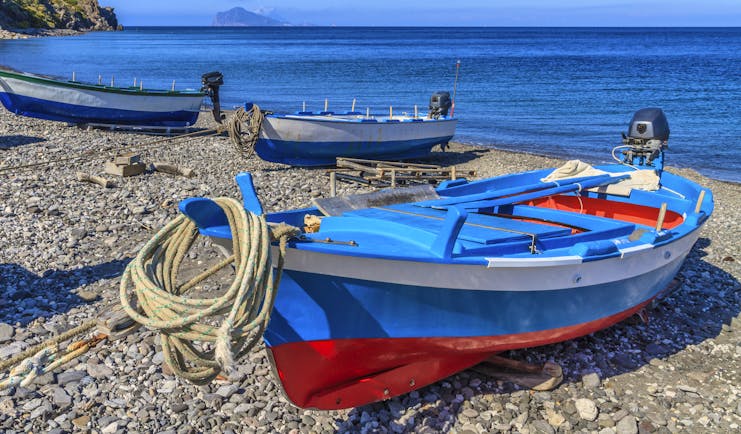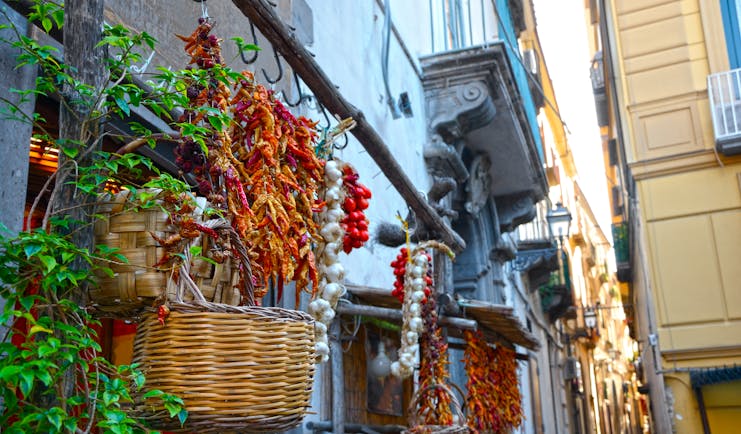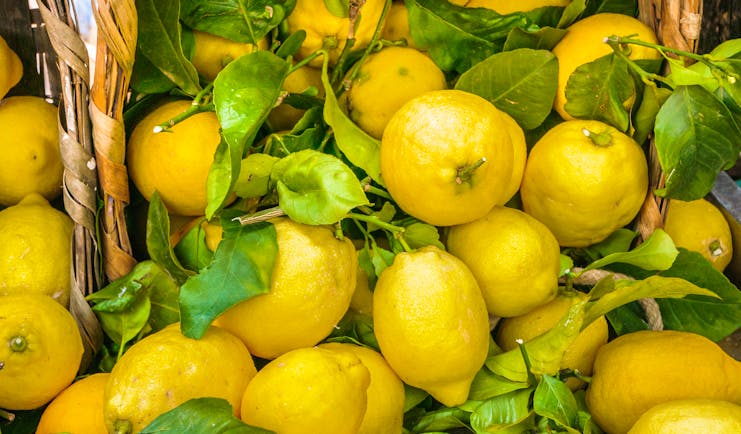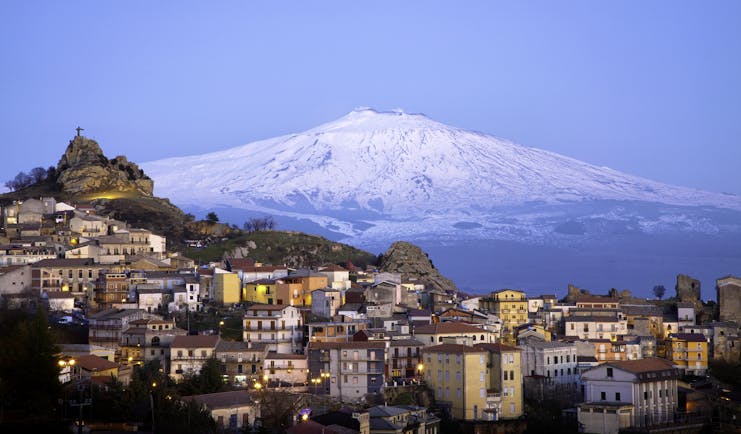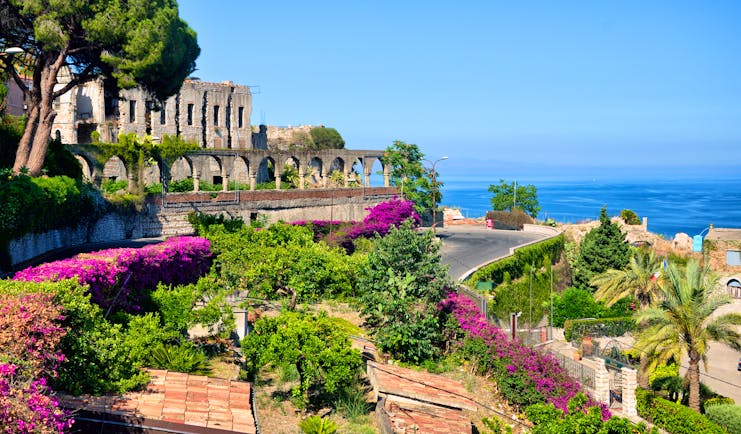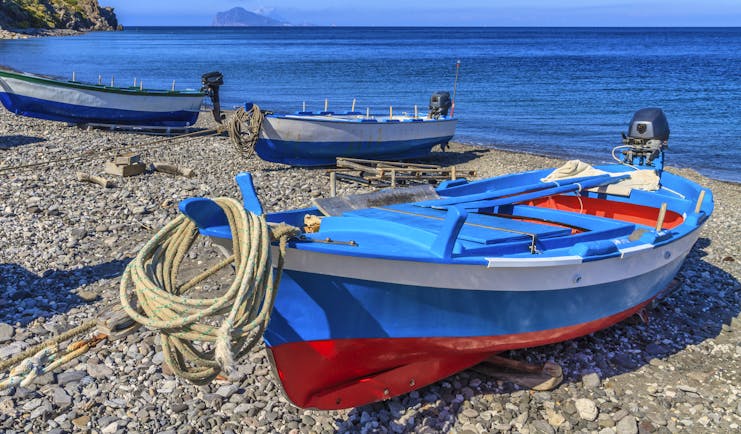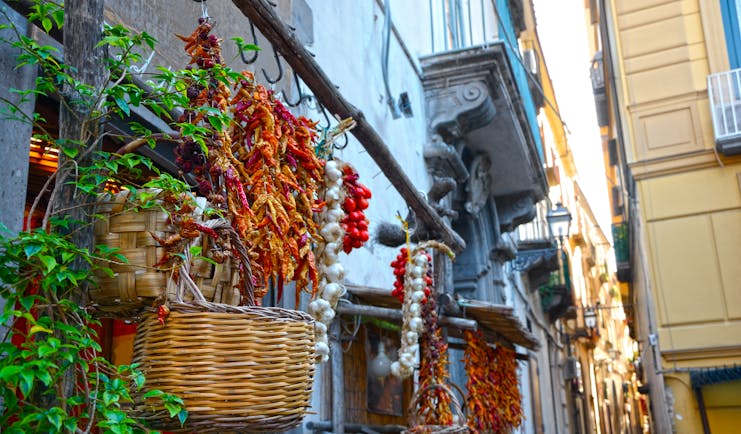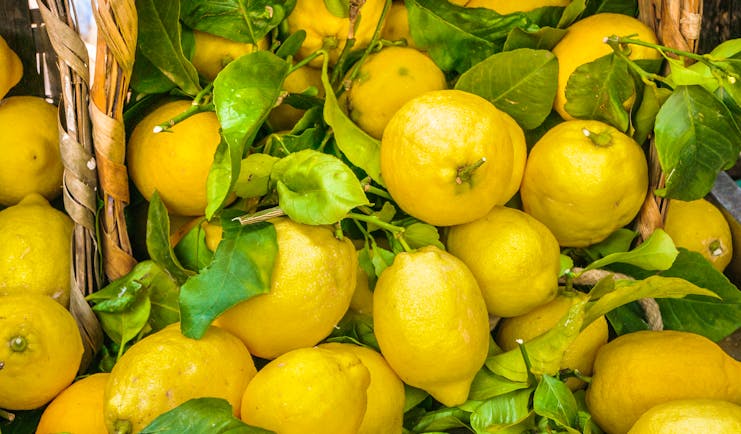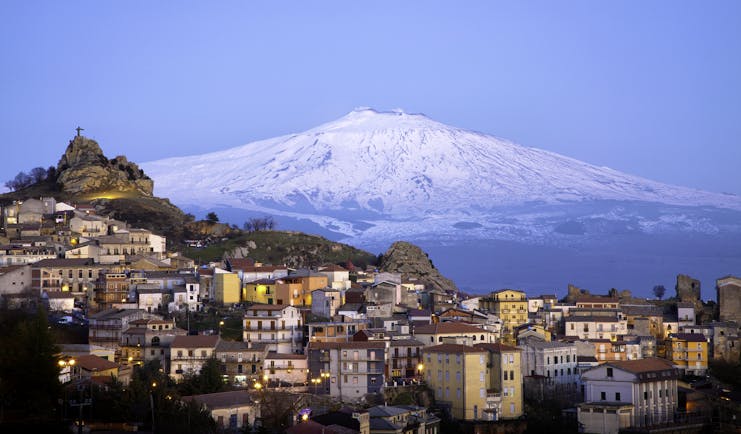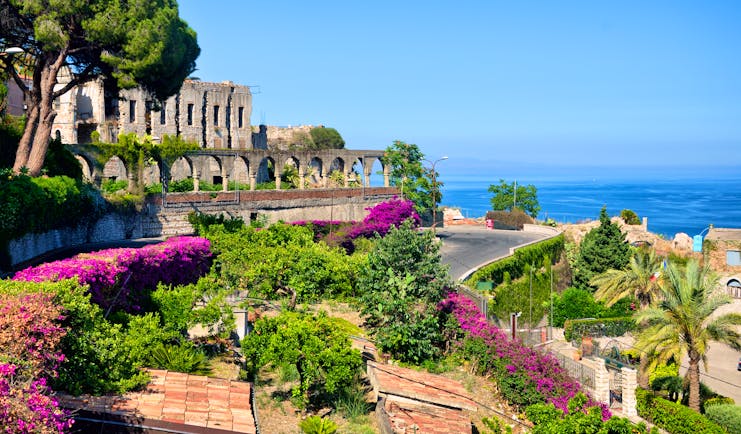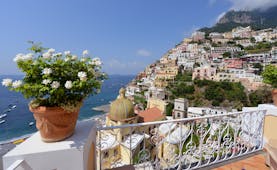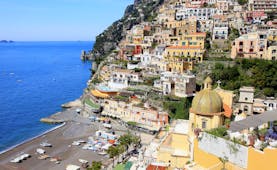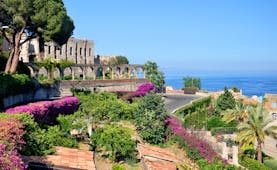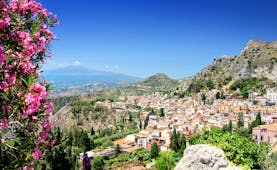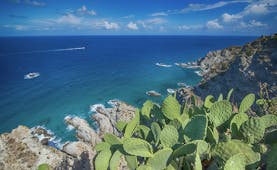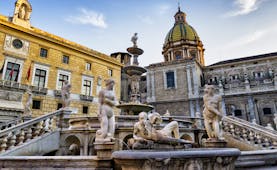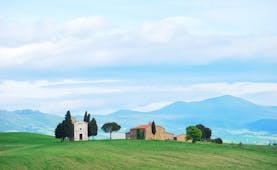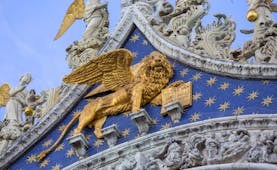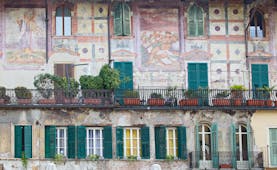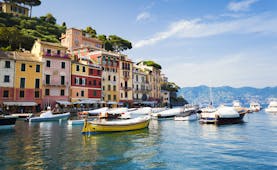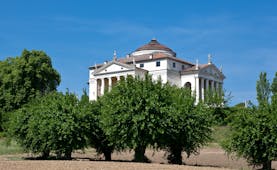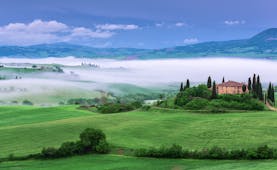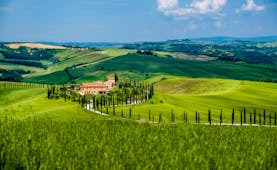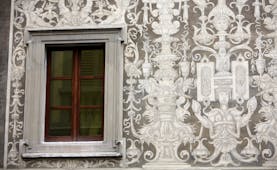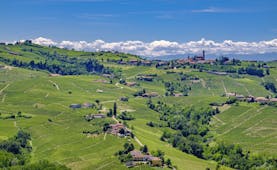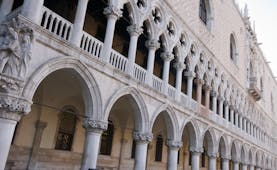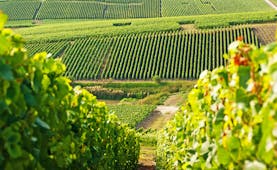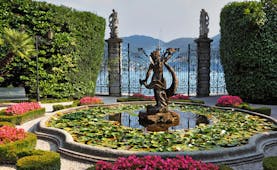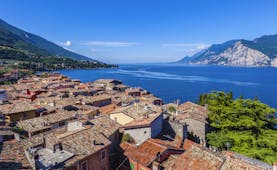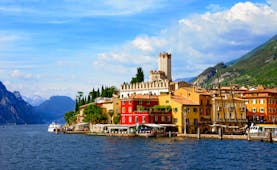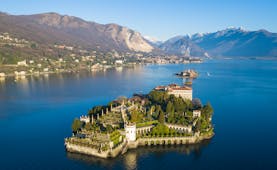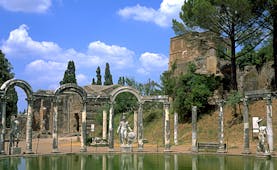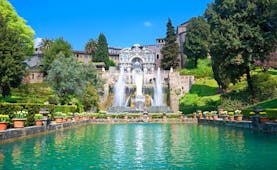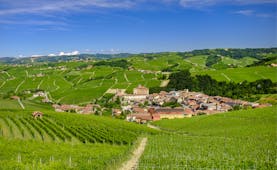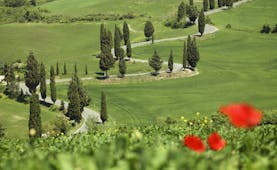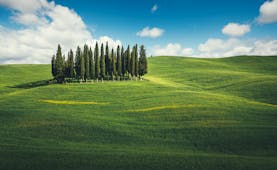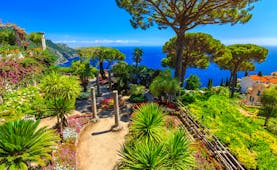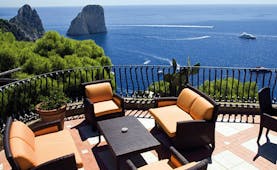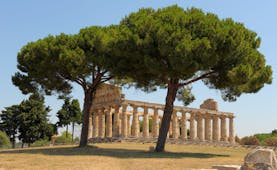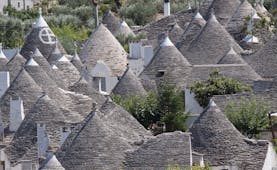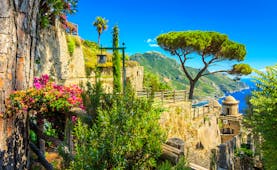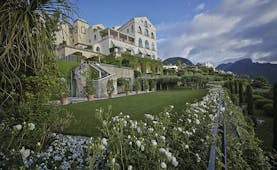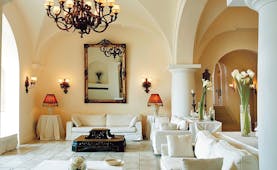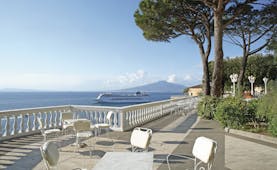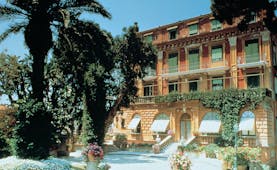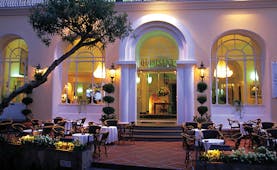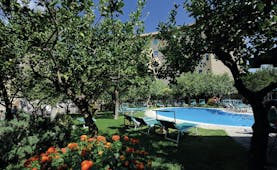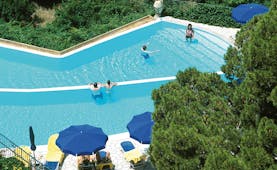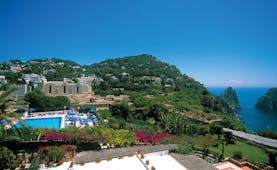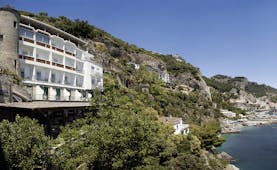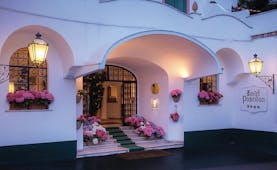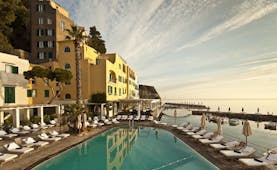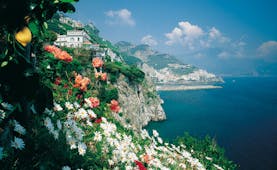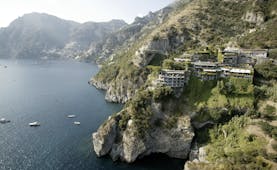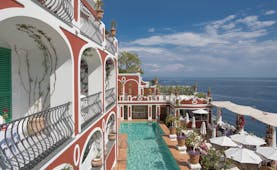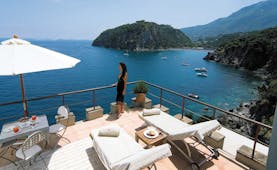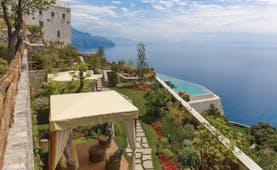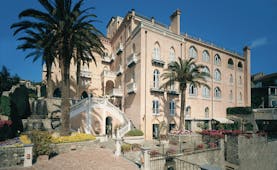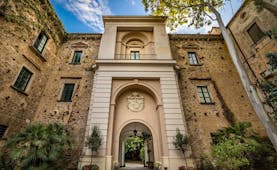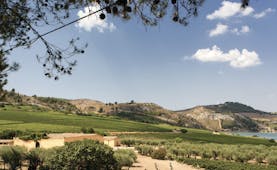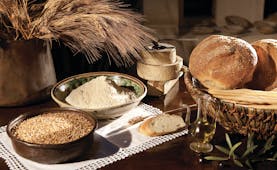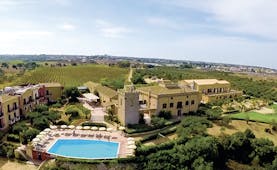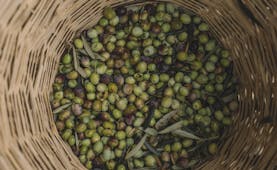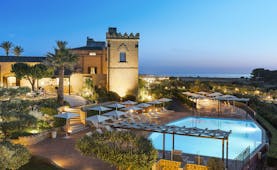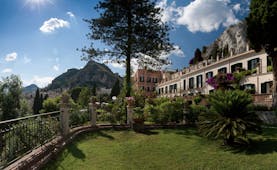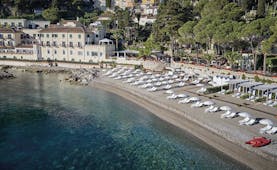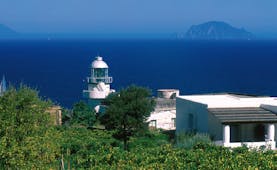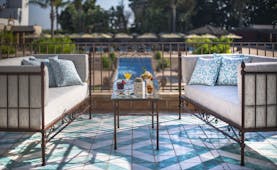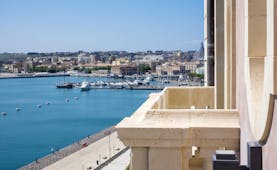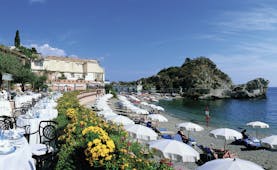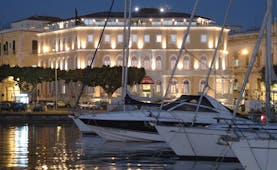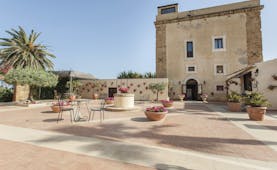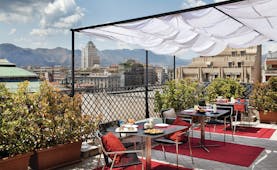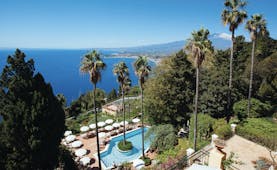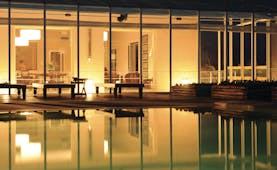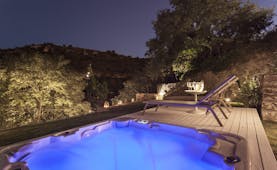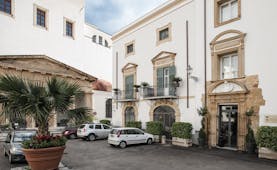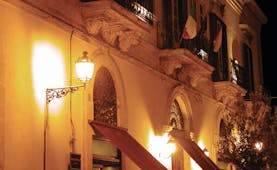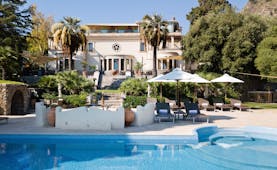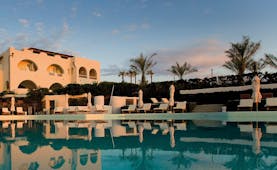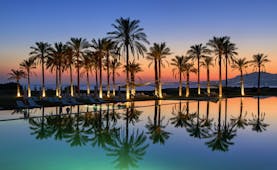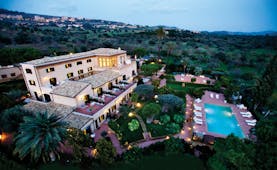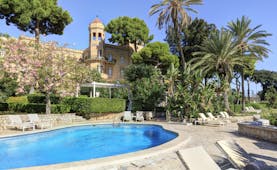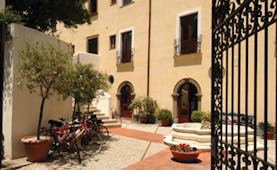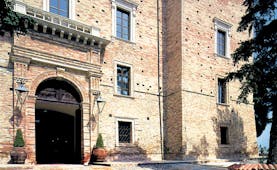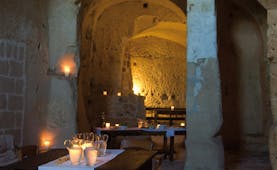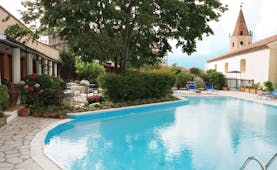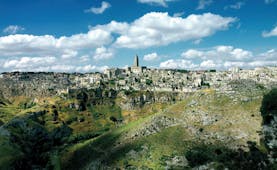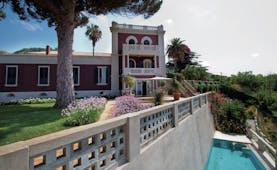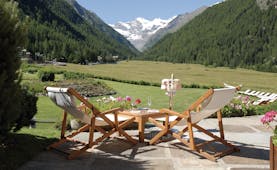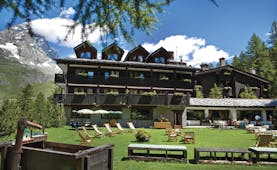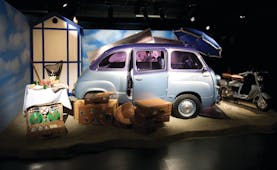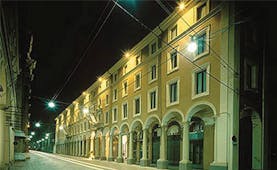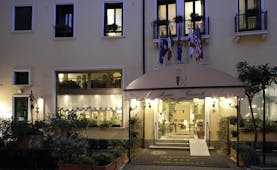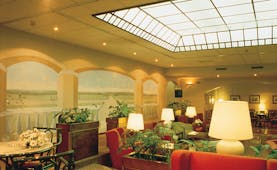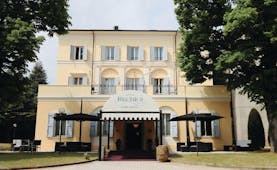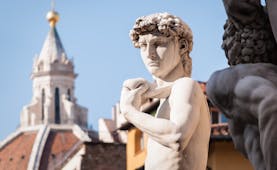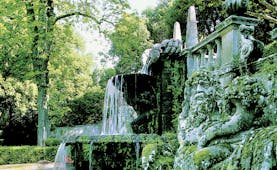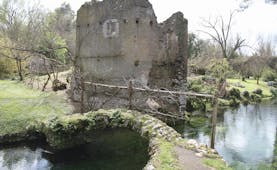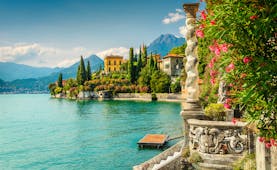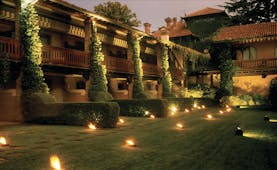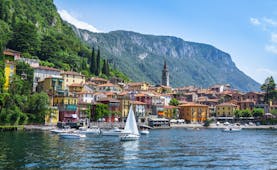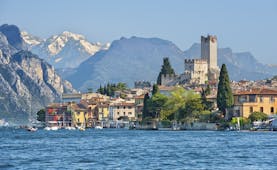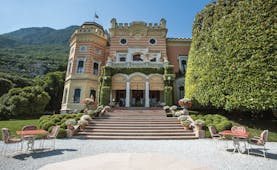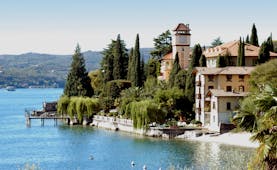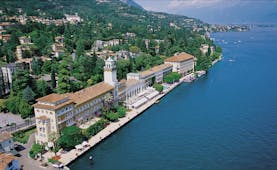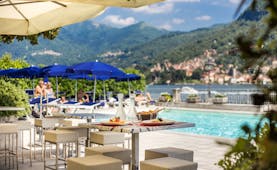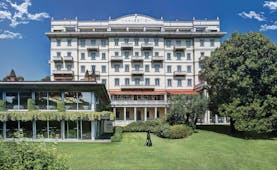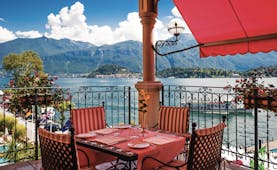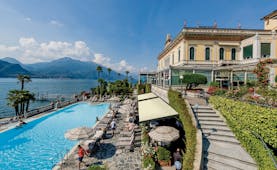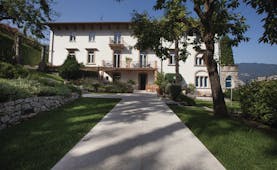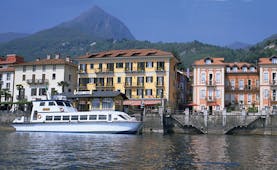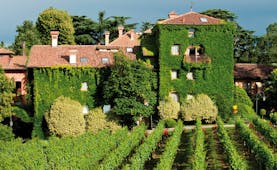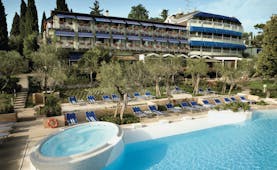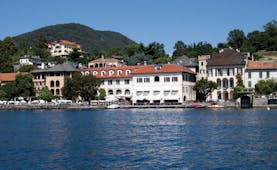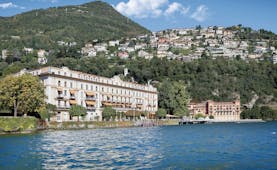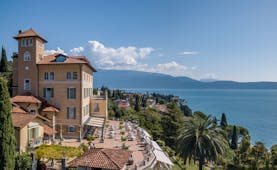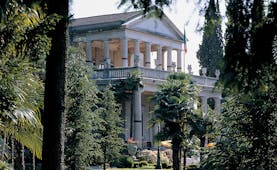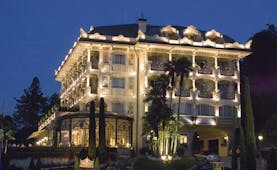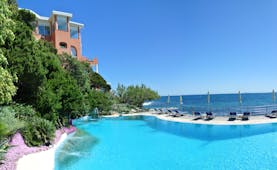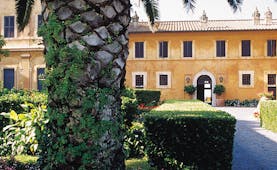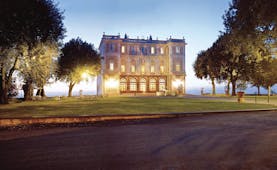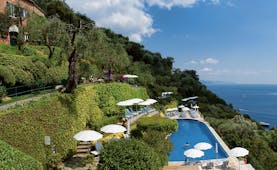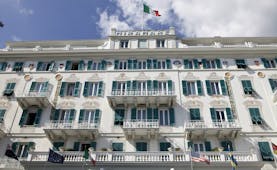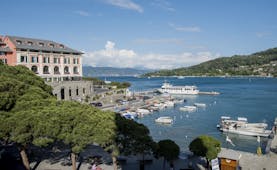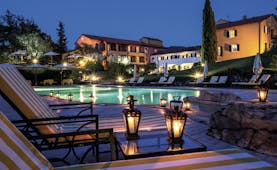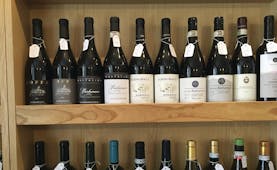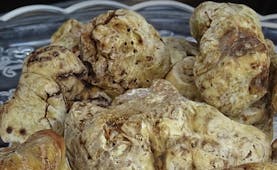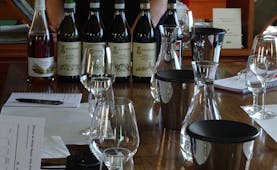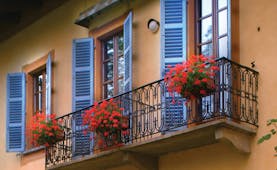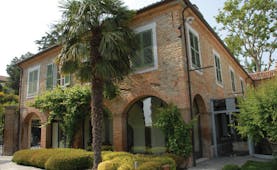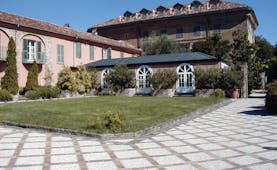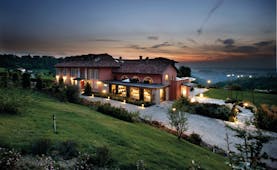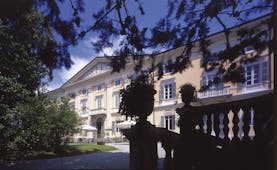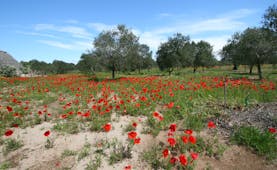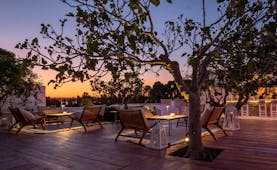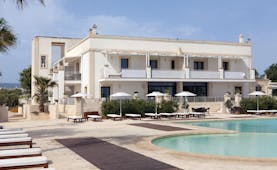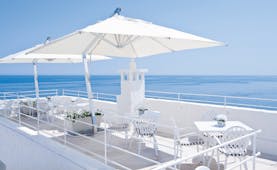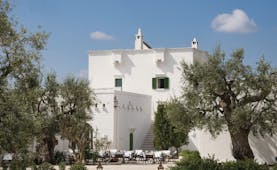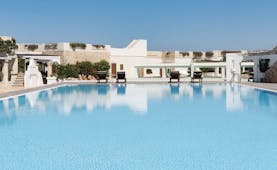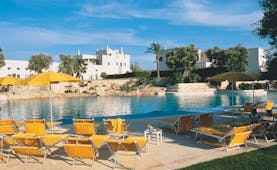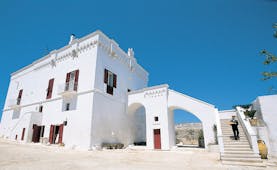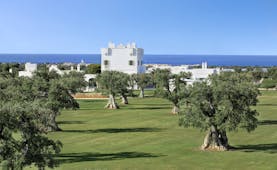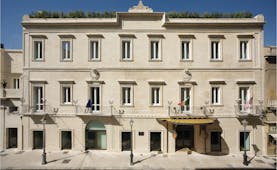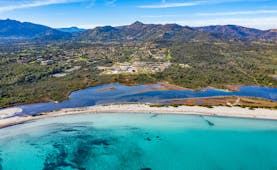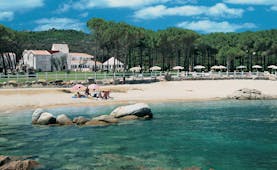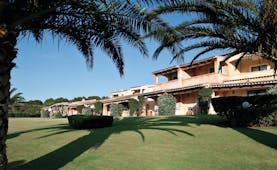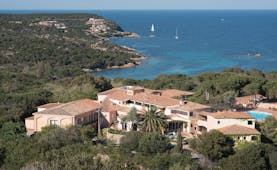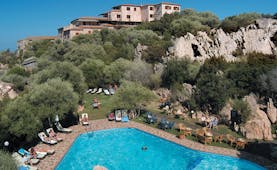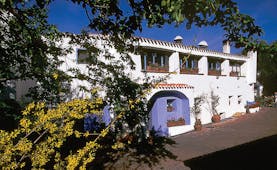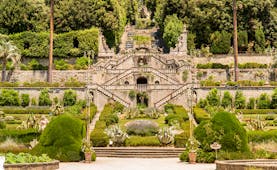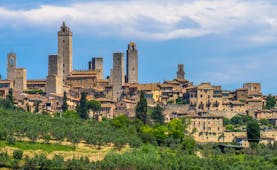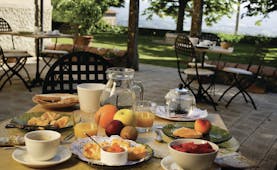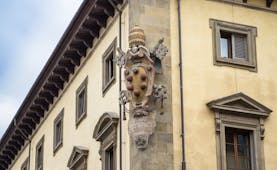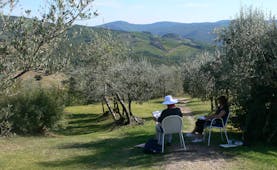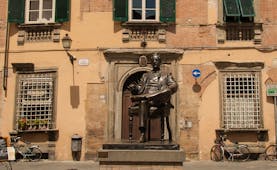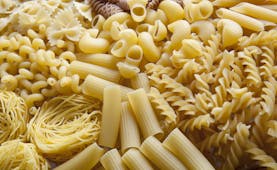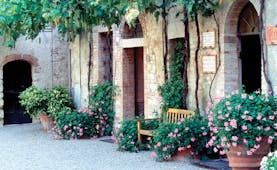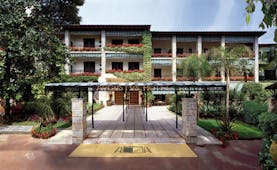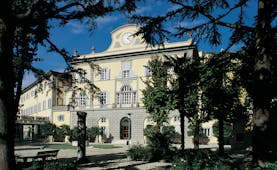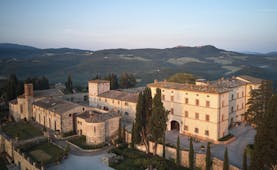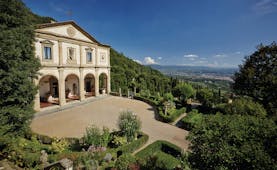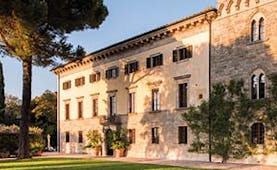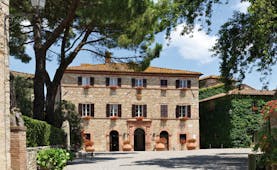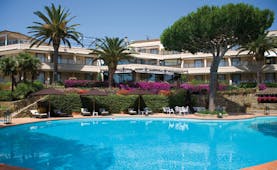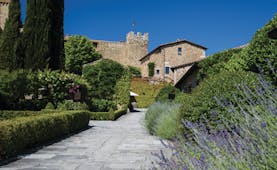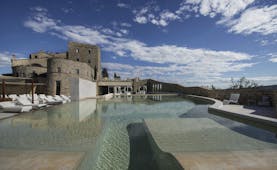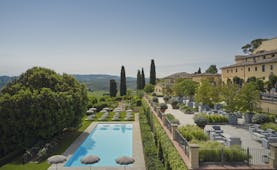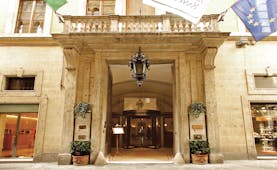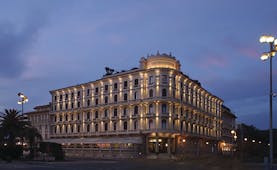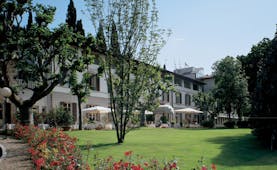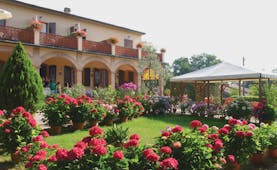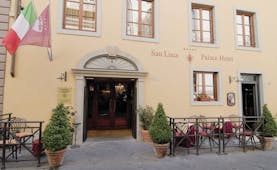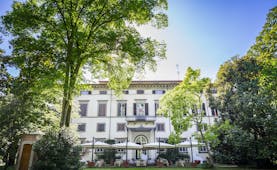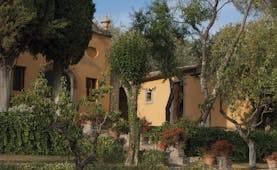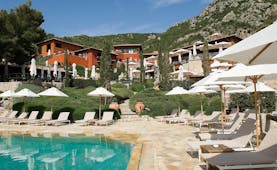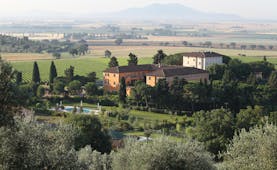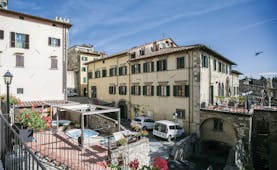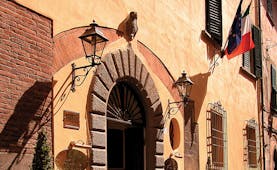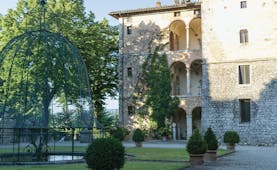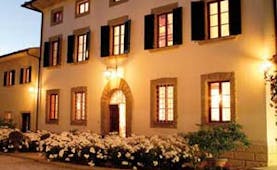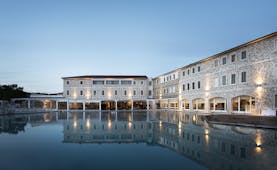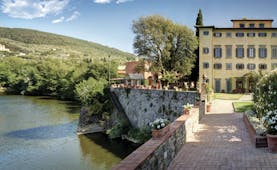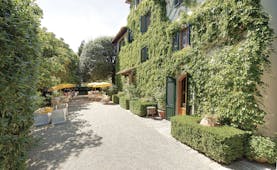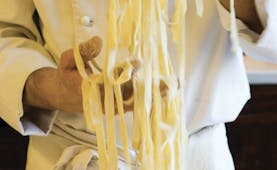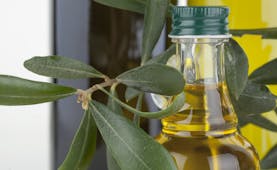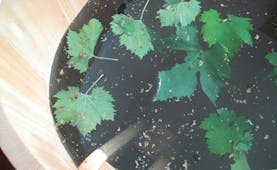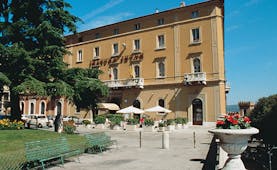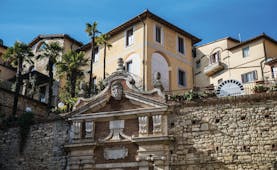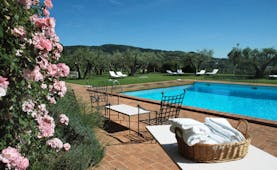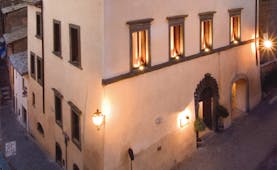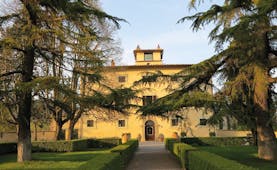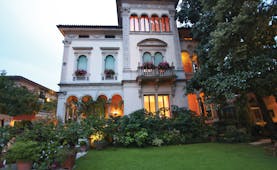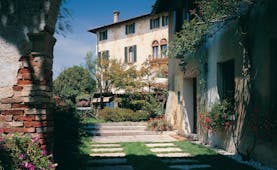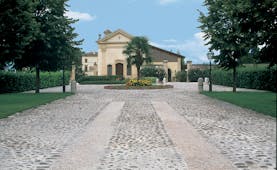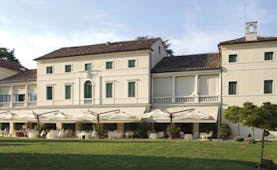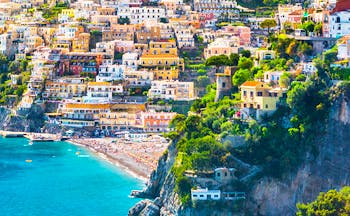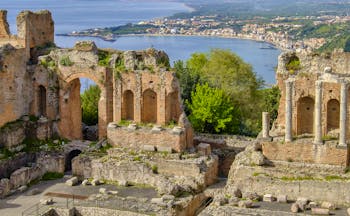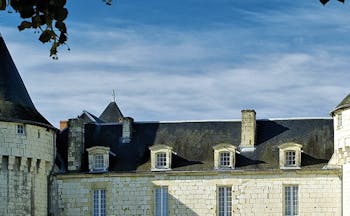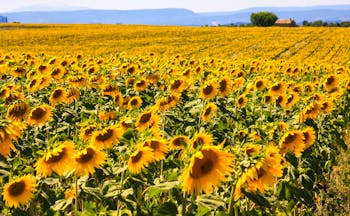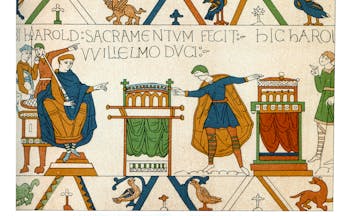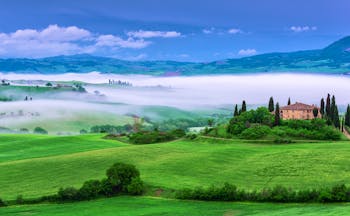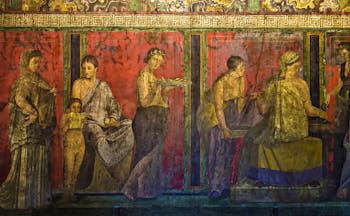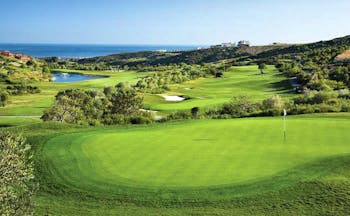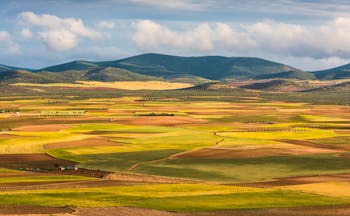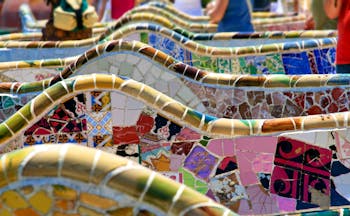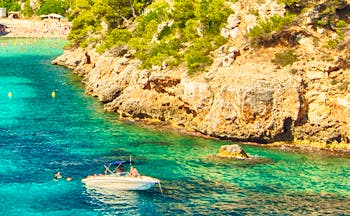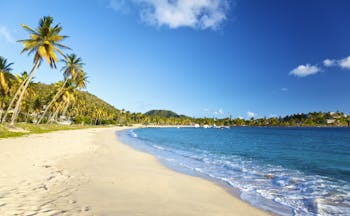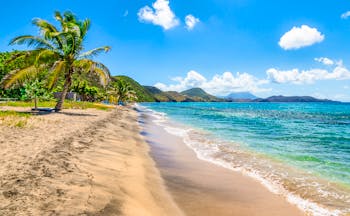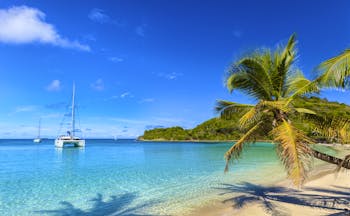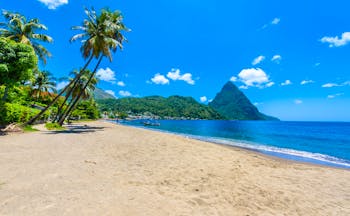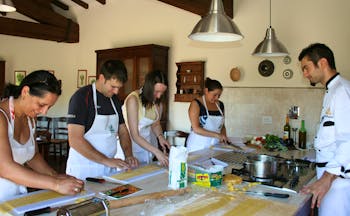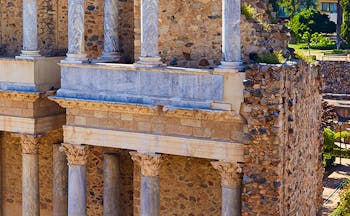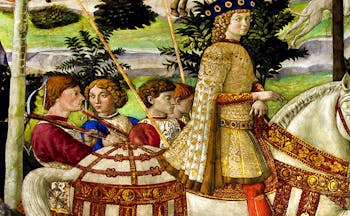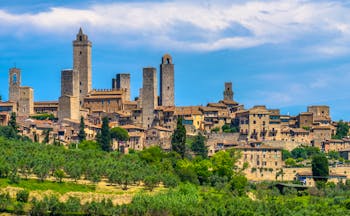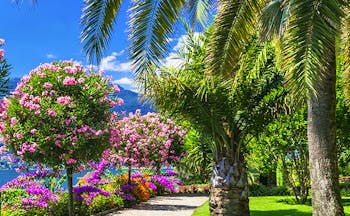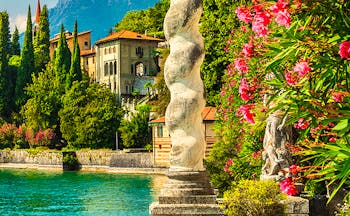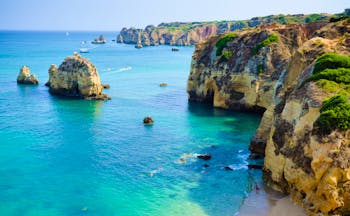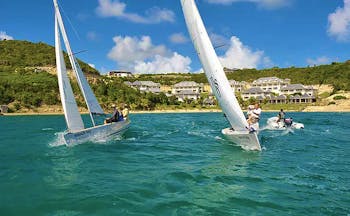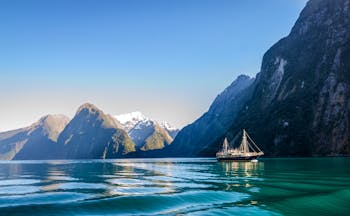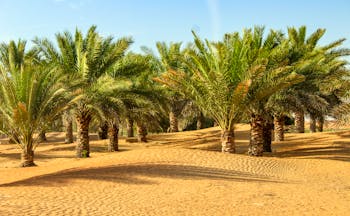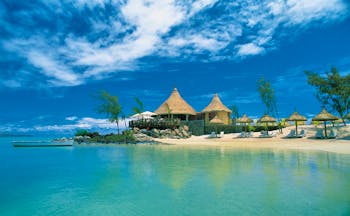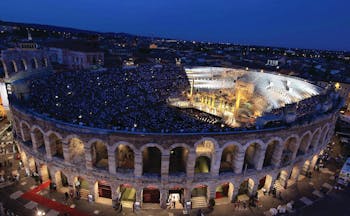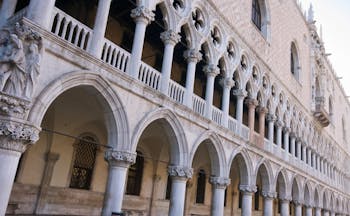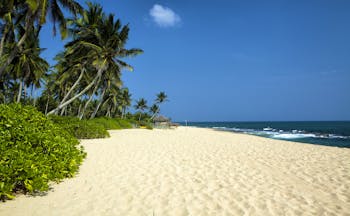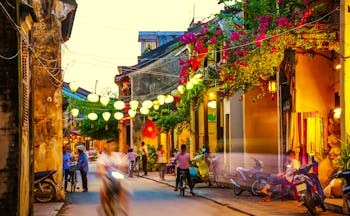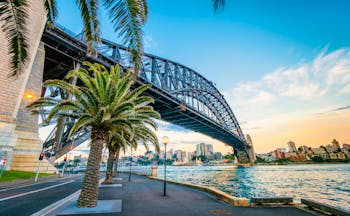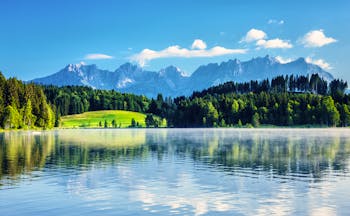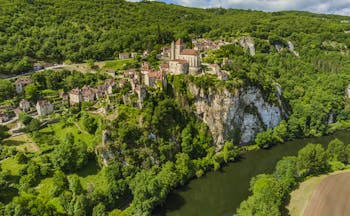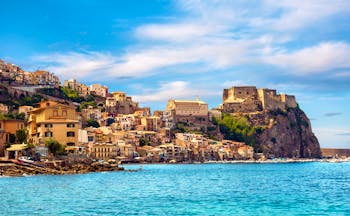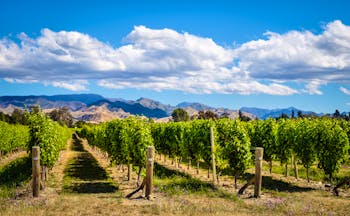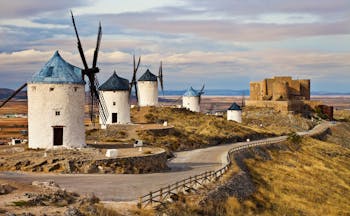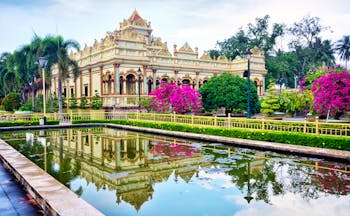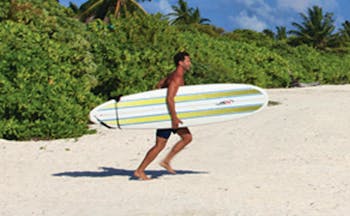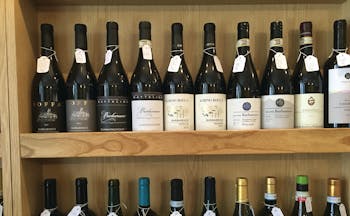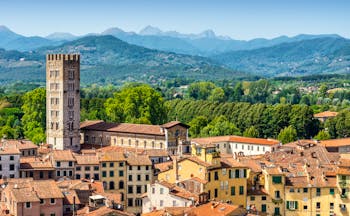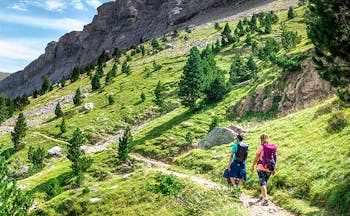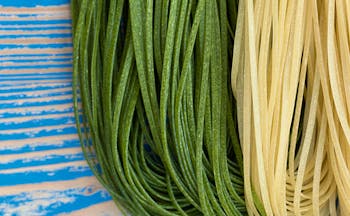Sicily, the Aeolian Islands and Capri luxury tailormade touring holiday
This touring holiday begins with the rich tapestry of Mediterranean history on the southern Italian island of Sicily, which has a fascinating blend of cultures, architectural treasures, captivating coastal scenery, parched mountains and fertile groves of oranges, lemons and olives. Your first stop in Sicily is in the ancient town of Taormina, in a beautiful perched location affording views of dramatic Mount Etna. Taormina has plenty to occupy you for five nights, both in the town itself with its pretty architecture, Greek theatre and botanic gardens. From here you can visit the beach at Taormina Mare and take excursions to Etna. Your next stop, the Aeolian island of Lipari is perhaps the most ‘Sicilian’ of the islands, offering breath-taking scenery and an easy escape from life’s daily routines. There is a pretty port and the island is known for its pumice and obsidian. From here you move to the island of Salina, renowned for its Malvasia wine and island lifestyle. You journey across the Mediterranean to Naples and on to the island of Capri, with its wealth of designer boutiques, chic restaurants and captivating scenery, is a perfect place to end your touring holiday of Italy's southern islands.
Highlights
Taormina • Visit the Greek theatre • Excursions to Etna • Visit the beach at Taormina Mare • Lipari • Day-trip to Panarea • Salina • Spaggia dello Scario • Capri • Visit the Villa San Michele Axel Munthe • Visit the Blue Grotto
Day by day
Upon arrival in Catania you are transferred by private car to the historic town of Taormina which will be your base for five nights. There is plenty to explore within the town itself, on the coast nearby or further into foothills of Mount Etna, visible from Taormina. The Teatro Antico di Taormina, the second largest ancient theatre in Sicily, is the source of much debate amongst the local residents, as to whether its origins are Greek or Roman. Taormina’s origins as a Greek Polis, however, point towards a Grecian beginning. The theatre comes alive throughout the summer with the ‘Taormina Arte’ festival, featuring cinema, theatre, ballet, and music performances. The gothic Badia Vecchia and the Palazzo Duca di S. Stefano are the perfect places to witness the Arabian and Norman influences on the town. The former used to be used as an abbey, and still contains subtle references to its religious past, while both were built to fortify the town’s defences. Nowhere in Taormina does its Arabian history become more apparent than in the intricately arched windows and stairways of the Palazzo Corvaja, built in the style of the first temple Abraham built in God’s name. The Corsa Umberto, the pedestrian-only street in the centre of the town, is the ideal place to buy Sicilian souvenirs, from the beautiful hand-made ceramics, the fine leather, and the Sicilian wines, to the wrought iron and wooden products. You may want the use of a hire-car for a day or two to explore the immediate area.
On the sixth day you are taken by private car to Milazzo on the north cost of Sicily, to catch the fast ferry to Lipari, which takes just under an hour. Lipari is one of the closest Aeolian Islands to Sicily and a good introduction to the islands. Lipari’s main port is a thriving and bustling area, with lots of character. During the three days that you have on Lipari, take time to explore the winding streets of this small Italian town, purchasing samples of the Malvasia wine and the local capers, perhaps in a harbour-side restaurant. The main historic attraction of Lipari is the Castello, large enough and intricate enough to be a citadel in itself. Some of the buildings inside house a museum. Lipari’s archaeological museum pays testament to Lipari’s connections with ancient Greece and Rome, with its selection of Greek vases, amphorae from wrecks, and models of Greek theatrical masks that were found in the tombs on the island. The Norman cloisters within the cathedral are particularly beautiful, with delicate animal carvings on the capitals of the columns. Whilst in the town centre, pick up some of the pumice that the island is so well-known for. Though the pumice is not mined for with the same intensity that it once was opportunities across the island still exist for visitors to collect some of their own from its source. The island’s obsidian is also highly sought after, used as it is to make knives. Take a hydrofoil to one of the other nearby Aeolian Islands, perhaps Filicuda or Panarea, or simply enjoy the sea air and warmth of this island in the Tyrrhenian Sea.
From Lipari you continue your journey by fast ferry to the more distant Aeolian island of Salina, arriving at the port of Santa Marina, with a crossing time of about 20 minutes. Salina is the second largest Aeolian island, after Lipari, and is striking with its stone streets, pebble beaches and two dormant volcanoes. The soil is fertile, and the island has lush vegetation with an abundance of olive groves, caper bushes, fig and citrus as well as the vines that have made the island famous. For an educational and cultural experience in Salina, consider visiting the Museo dell’Emigrazione Eoliana, or simply observe the monuments and architecture in the small towns and villages as you visit them. The Santuario della Madonna del Terzito is the site of the Feast of Assumption on the 15th August every year, which attracts residents from every one of the Aeolian Islands, making it a veritable pilgrimage point. For a relaxing few days taking in the sun, arrange transport to the Spaggia dello Scario, and walk the considerable distance down the cliffside to the beach. With a small café on hand, clear blue waters, and a clean pebbly beach, the Spaggia dello Scario makes a great stop-off point for an afternoon of secluded relaxation. Alternatively, head west from your hotel to Malfa, where the streets are skirted by palm trees, and the beach is guarded by sand dunes. Wander inland through the countryside, kept unusually green by the fresh water springs, to find out why Salina is a UNESCO World Heritage Site. Embark upon the hiking trails up either the Monte Fossa delli Fecci or Monte dei Porri volcanoes or stay on ground level to see the impressive rocky window land formation that hangs like an arch across the sea. In the towns and villages, the restaurants specialise in simple, home-style Italian food, particularly pasta, pizza, and seafood. Far removed from the major tourist spots in mainland Italy, the shops on Salina serve mainly the local needs, but there are local speciality cheeses, handmade clothes, lace, cashmere, wooden products, and pottery in one of the small shops.
You travel from Salina to Naples by hydrofoil, with a journey time of about 5 hrs and 35 mins, and then from Naples on to Capri, which takes about 45 minutes by hydrofoil. Capri is famous for its rugged cliffs that tumble into the azure sea, its chic boutiques and fine restaurants, and the Blue Grotto. It was also the place that the Emperor Tiberius chose to be his residence. To really experience the landscape of Capri take a boat trip on your first day around the island. Specific points of interest include the Faraglioni rocky outcrops to the east, most formidable when viewed from the sea, but also home to a particular species of blue lizard. On the west side of the island you will pass the small opening of the Grotta Azzurra, a cave accessible only by swimming or on very small boats, famous because the waters inside glow a luminous, iridescent blue. The effect is caused by the light that enters the cave through a subaqueous window, but still has something of a magical feel to it. Before you begin your tour of Capri on foot, purchase a pair of traditional Capri sandals sold at the Canfora shop, so you may walk across the island in the footwear worn by the likes of Sophia Loren. The Villa Jovis, on the most eastern point of Capri, perched dramatically on a sheer cliff edge, is the palace of Tiberius, now partially in ruins. The pattern of its walls is still intact, as is its grandeur and appeal. Visit the picturesque and peaceful Carthusian monastery of Certosa di San Giacomo, before appreciating the magnificent views of Il Faraglioni from the Belvedere di Tragara Punto. For more spectacular views, visit the Giardini Augusto, a series of beautiful terraced gardens containing exotic Capri plants that date back to the 1930s. Or, for more long, rambling walks along the Capri coastline, seek out the Via Krupp, that will take you to the Marina Piccola, and winds down the steep cliffside. The Sentiero dei Fortini is a path that links the many forts that once protected the island, at the end of which, you can rise high above Capri and witness its splendour from the sky on a cable car trip up the side of Monte Solaro. It is worth also visiting the Villa Malaparte, built on an eastern rocky outcrop, painted entirely red and built in an unusual modernist style. Back in Capri Town, make the most of the idyllic cafes on the famous Piazzetta, or browse and buy to your hearts content in the numerous luxury shops. Before your stay in Capri is over, be sure to try the Limoncello that Capri is famous for, the Capri white wines, and the Torta Caprese, a cake of almonds and dark chocolate. You have a total of five nights in Capri, which affords you plenty of time for exploring and relaxing at your hotel.
You are transferred from your hotel in Capri by car and hydrofoil and then car again in Naples to the airport for your return flight to London.
Thanks for organising what was a wonderful holiday. Apart from a delay because of Gatwick fog coming home, everything ran like clockwork and we had a cracking time. I would be happy to recommend Expressions and hope we will have the opportunity to organise another trip with you in the future.Mrs S, October 2024
Holiday price guide Prices from about £3,710 per person based on two people sharing a double or twin room.
Holiday Code ITBA01
Call us on 01392 441245
Sicily, the Aeolian Islands and Capri luxury tailormade touring holiday
Upon arrival in Catania you are transferred by private car to the historic town of Taormina which will be your base for five nights. There is plenty to explore within the town itself, on the coast nearby or further into foothills of Mount Etna, visible from Taormina. The Teatro Antico di Taormina, the second largest ancient theatre in Sicily, is the source of much debate amongst the local residents, as to whether its origins are Greek or Roman. Taormina’s origins as a Greek Polis, however, point towards a Grecian beginning. The theatre comes alive throughout the summer with the ‘Taormina Arte’ festival, featuring cinema, theatre, ballet, and music performances. The gothic Badia Vecchia and the Palazzo Duca di S. Stefano are the perfect places to witness the Arabian and Norman influences on the town. The former used to be used as an abbey, and still contains subtle references to its religious past, while both were built to fortify the town’s defences. Nowhere in Taormina does its Arabian history become more apparent than in the intricately arched windows and stairways of the Palazzo Corvaja, built in the style of the first temple Abraham built in God’s name. The Corsa Umberto, the pedestrian-only street in the centre of the town, is the ideal place to buy Sicilian souvenirs, from the beautiful hand-made ceramics, the fine leather, and the Sicilian wines, to the wrought iron and wooden products. You may want the use of a hire-car for a day or two to explore the immediate area.
On the sixth day you are taken by private car to Milazzo on the north cost of Sicily, to catch the fast ferry to Lipari, which takes just under an hour. Lipari is one of the closest Aeolian Islands to Sicily and a good introduction to the islands. Lipari’s main port is a thriving and bustling area, with lots of character. During the three days that you have on Lipari, take time to explore the winding streets of this small Italian town, purchasing samples of the Malvasia wine and the local capers, perhaps in a harbour-side restaurant. The main historic attraction of Lipari is the Castello, large enough and intricate enough to be a citadel in itself. Some of the buildings inside house a museum. Lipari’s archaeological museum pays testament to Lipari’s connections with ancient Greece and Rome, with its selection of Greek vases, amphorae from wrecks, and models of Greek theatrical masks that were found in the tombs on the island. The Norman cloisters within the cathedral are particularly beautiful, with delicate animal carvings on the capitals of the columns. Whilst in the town centre, pick up some of the pumice that the island is so well-known for. Though the pumice is not mined for with the same intensity that it once was opportunities across the island still exist for visitors to collect some of their own from its source. The island’s obsidian is also highly sought after, used as it is to make knives. Take a hydrofoil to one of the other nearby Aeolian Islands, perhaps Filicuda or Panarea, or simply enjoy the sea air and warmth of this island in the Tyrrhenian Sea.
From Lipari you continue your journey by fast ferry to the more distant Aeolian island of Salina, arriving at the port of Santa Marina, with a crossing time of about 20 minutes. Salina is the second largest Aeolian island, after Lipari, and is striking with its stone streets, pebble beaches and two dormant volcanoes. The soil is fertile, and the island has lush vegetation with an abundance of olive groves, caper bushes, fig and citrus as well as the vines that have made the island famous. For an educational and cultural experience in Salina, consider visiting the Museo dell’Emigrazione Eoliana, or simply observe the monuments and architecture in the small towns and villages as you visit them. The Santuario della Madonna del Terzito is the site of the Feast of Assumption on the 15th August every year, which attracts residents from every one of the Aeolian Islands, making it a veritable pilgrimage point. For a relaxing few days taking in the sun, arrange transport to the Spaggia dello Scario, and walk the considerable distance down the cliffside to the beach. With a small café on hand, clear blue waters, and a clean pebbly beach, the Spaggia dello Scario makes a great stop-off point for an afternoon of secluded relaxation. Alternatively, head west from your hotel to Malfa, where the streets are skirted by palm trees, and the beach is guarded by sand dunes. Wander inland through the countryside, kept unusually green by the fresh water springs, to find out why Salina is a UNESCO World Heritage Site. Embark upon the hiking trails up either the Monte Fossa delli Fecci or Monte dei Porri volcanoes or stay on ground level to see the impressive rocky window land formation that hangs like an arch across the sea. In the towns and villages, the restaurants specialise in simple, home-style Italian food, particularly pasta, pizza, and seafood. Far removed from the major tourist spots in mainland Italy, the shops on Salina serve mainly the local needs, but there are local speciality cheeses, handmade clothes, lace, cashmere, wooden products, and pottery in one of the small shops.
You travel from Salina to Naples by hydrofoil, with a journey time of about 5 hrs and 35 mins, and then from Naples on to Capri, which takes about 45 minutes by hydrofoil. Capri is famous for its rugged cliffs that tumble into the azure sea, its chic boutiques and fine restaurants, and the Blue Grotto. It was also the place that the Emperor Tiberius chose to be his residence. To really experience the landscape of Capri take a boat trip on your first day around the island. Specific points of interest include the Faraglioni rocky outcrops to the east, most formidable when viewed from the sea, but also home to a particular species of blue lizard. On the west side of the island you will pass the small opening of the Grotta Azzurra, a cave accessible only by swimming or on very small boats, famous because the waters inside glow a luminous, iridescent blue. The effect is caused by the light that enters the cave through a subaqueous window, but still has something of a magical feel to it. Before you begin your tour of Capri on foot, purchase a pair of traditional Capri sandals sold at the Canfora shop, so you may walk across the island in the footwear worn by the likes of Sophia Loren. The Villa Jovis, on the most eastern point of Capri, perched dramatically on a sheer cliff edge, is the palace of Tiberius, now partially in ruins. The pattern of its walls is still intact, as is its grandeur and appeal. Visit the picturesque and peaceful Carthusian monastery of Certosa di San Giacomo, before appreciating the magnificent views of Il Faraglioni from the Belvedere di Tragara Punto. For more spectacular views, visit the Giardini Augusto, a series of beautiful terraced gardens containing exotic Capri plants that date back to the 1930s. Or, for more long, rambling walks along the Capri coastline, seek out the Via Krupp, that will take you to the Marina Piccola, and winds down the steep cliffside. The Sentiero dei Fortini is a path that links the many forts that once protected the island, at the end of which, you can rise high above Capri and witness its splendour from the sky on a cable car trip up the side of Monte Solaro. It is worth also visiting the Villa Malaparte, built on an eastern rocky outcrop, painted entirely red and built in an unusual modernist style. Back in Capri Town, make the most of the idyllic cafes on the famous Piazzetta, or browse and buy to your hearts content in the numerous luxury shops. Before your stay in Capri is over, be sure to try the Limoncello that Capri is famous for, the Capri white wines, and the Torta Caprese, a cake of almonds and dark chocolate. You have a total of five nights in Capri, which affords you plenty of time for exploring and relaxing at your hotel.
You are transferred from your hotel in Capri by car and hydrofoil and then car again in Naples to the airport for your return flight to London.
Thanks for organising what was a wonderful holiday. Apart from a delay because of Gatwick fog coming home, everything ran like clockwork and we had a cracking time. I would be happy to recommend Expressions and hope we will have the opportunity to organise another trip with you in the future.Mrs S, October 2024
Holiday price guide Prices from about £3,710 per person based on two people sharing a double or twin room.
Holiday Code ITBA01
Our prices include
● Scheduled flight with British Airways London to Catania, returning Naples to London.
● Private car transfers from Catania to Taormina, Taormina to Milazzo
● Transfers by boat and car Naples port to Capri, and Capri to Naples Airport
● Hydrofoil tickets from Milazzo to Lipari, Lipari to Salina, Salina to Naples
● Five nights’ bed and breakfast in a Classic double room at the Hotel Belvedere, Taormina
● Three nights’ bed and breakfast in a Classic double room at the Hotel Villa Meligunis, Lipari
● Three nights’ bed and breakfast in a Classic double at the Capofaro, Salina
● Five nights’ dinner, bed and breakfast Double room with side sea view at the Hotel Luna, Capri
● Concierge service and Expressions Holidays regional helpful hints
Our prices do not include
● Early check-in or late check-out at any hotels (although we can arrange this on request at additional cost)
● Any other services not mentioned above, such as transfers and meals except breakfast at hotels
● Personal holiday insurance. This is essential and cover should be in place from when you book the holiday.
● Local tourist tax, usually between Euros 1 and 3 per person per night, and payable locally to the hotel
Additional information
Travelling times for this touring holiday
Catania to Taormina 50 minutes
Taormina to Lipari 2 hours 30 minutes
Lipari to Salina 20 minutes
Salina to Capri Town 8 hours including time in between hydrofoils
Capri Town to Naples airport 1 hour 45 minutes
Call us on 01392 441245
Sicily, the Aeolian Islands and Capri luxury tailormade touring holiday
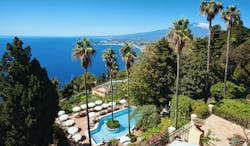
Hotel Villa Belvedere is a delightful 4-star hotel boutique hotel with enchanting views of Mount Etna and the sea. The beautiful gardens and idyllic terrace make it an ideal spot to relax and recuperate after exploring historic Taormina.
Classic double room
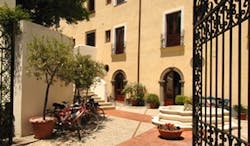
Villa Meligunis is a charming 4-star boutique hotel in a glorious seafront location. With enviable views of both the historic castello and the Mediterranean sea, delicious local cuisine and comfortable accommodation afford guests a relaxing and restorative experience.
Classic double room
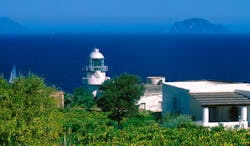
Capofaro Malvasia Resort and Spa is a delightful hotel in a stunning island location, off-the-beaten-track.
Classic double room
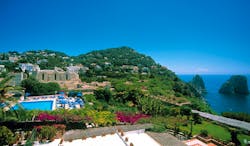
Hotel Luna is a boutique hotel in an excellent location with beautiful gardens and sublime coastal views. Part-submerged in the verdant greenery that covers the rocky coastline of Capri, this hotel blends perfectly into the natural beauty of its surroundings.
Double room with side sea view
Thanks for organising what was a wonderful holiday. Apart from a delay because of Gatwick fog coming home, everything ran like clockwork and we had a cracking time. I would be happy to recommend Expressions and hope we will have the opportunity to organise another trip with you in the future.Mrs S, October 2024
Holiday price guide Prices from about £3,710 per person based on two people sharing a double or twin room.
Holiday Code ITBA01
Call us on 01392 441245
Sicily, the Aeolian Islands and Capri luxury tailormade touring holiday
About Amalfi Coast
An Expressions tailor-made holiday to the Amalfi Coast is perfect for those looking for relaxation as well as sightseeing in coastal towns such as Amalfi, Positano, Ravello and Sorrento on the Amalfi Coast as well as the islands of Capri and Ischia. The Amalfi Coast is best known for its dramatic coastal scenery, deep gorges and violently-shaped rocks that plunge into a deep blue sea, tempered by the luxuriant vegetation that thrives in the favourable climate; lemons, oranges, olives, almonds, vines, camellias and bougainvillaea. Human habitation thrives in the tiny fishing villages in rocky coves and in the pink and white-washed flat-roofed or domed buildings that hug the cliffs in layers. The Amalfi Coast's history of trading throughout the Mediterranean still shows in the Moorish and Byzantine architectural styles; domes and arcades, wrought-iron balconies and colourful ceramic tiles which depict the region. The cuisine of the Amalfi Coast is light and simple, based on local fish and shellfish, lemons and oranges, mozzarella and fresh herbs. Whilst the climate of the Amalfi Coast is particularly appealing too, there are numerous excursion and sightseeing possibilities for your holiday including the islands of Procida, Capri and Ischia, the city of Naples, the Roman towns of Pompeii and Herculaneum, the romance of Ravello, the bustle of Sorrento and the charm of Positano.
Highlights of the Amalfi Coast
A drive along the Amalfi coast from Positano to Amalfi offers stunning and breath-taking scenery. Visit the Emerald Cave near Vettica Minore by boat. Enjoy the superb view of the coast from the 13th Century Gothic Villa Rufolo in Ravello (we offer garden tour holidays of the Amalfi Coast and Capri including a visit to Villa Rufolo). Spend a full day visiting the awe-inspiring site of Pompeii, visiting the remains of the villas containing both vibrant and delicate frescoes. Herculaneum is nearby and also worth visiting. The Greek site of Paestum has outstanding Doric temples. In the resort of Amalfi stroll along the Via Genova and the Via Capuano taking in the typical architecture of Campania with the flower-covered balconies, narrow alleyways leading to fountain-filled little squares. Take the chairlift on Capri to Monte Solaro or walk to the Migliara Belvedere for a view of the lighthouse. On Ischia visit the beaches of Citara and Maronti and enjoy a morning's walk to Monte Epomeo for panoramic views of the coast. Well worth visiting is the often-forgotten island of Procida between Naples and Ischia, with its vines and fishing, flat roofed white houses and atmosphere most characteristic of the region in bygone days. Visit Vietri for ceramics as well as stalls of lemons, garlic and peppers.
Cultural highlights of the Amalfi Coast
The House of the Vettii at Pompeii, the baroque Palazzo Reale at Caserta, Villa Jovis in Capri, the Doric temples of Paestum, Michelozzo`s tomb of Cardinal Rinaldo Brancaccio in the 14th Century church of Sant`Angelo, and in Naples: `Modesty` by Antonio Corradini in the Cappella Sansevero, the Gothic church of San Lorenzo Maggiore and the Majolica tiles in the cloisters of the 14th Century Santa Chiara.
Festivals on the Amalfi Coast
The Ravello music festival June to July, the festival of San Costanzo on 14 May on Capri, the festival of Sant`Antonio in Anacapri on 13 June, the festival of Madonna della Liberta in Marina Grande in September, Lo Sbarco dei Saraceni in Positano on the second Sunday in August.
Gastronomy of the Amalfi Coast
Neapolitan cuisine is now famous the world over for its use of tomatoes, pizza, mozzarella cheese, dried pasta and lemons. Local specialities include Mozzarella in Carrozza, Panzanella alla napoletana, Pasta alla sorrentina (with scamorza cheese and tomatoes), Sartu (an elaborate rice pie stuffed with meats, sausages, mushrooms etc), Timballo di Maccheroni (also elaborate with maccheroni baked in a pie and a sauce of chicken livers, mushrooms and black truffles), Carciofi ripieni alla napoletana (baked stuffed artichokes), Coviglie (a mousse-like dessert), Sproccolati (sun-dried figs on sticks) and Sfogliatelle (breakfast pastries). The region produces a number of excellent red and white wines. The most famous white is called Lacrimi Christi, from vines grown on the slopes of Mount Vesuvius. Taurasi from Avellino is a full-bodied red. Capri, Ischia and Sorrento all produce their own local wines.
Call us on 01392 441245
Sicily, the Aeolian Islands and Capri luxury tailormade touring holiday
About Sicily
An Expressions tailor-made holiday in Sicily allows visitors to discover a unique and captivating island. The rich tapestry of Mediterranean history can be witnessed on the southerly island of Sicily, fascinating not only for its amazing blend of cultures including Greek, Arab, Byzantine and Norman and its architectural treasures which reflect these influences but also for its breath-taking scenery of coast, parched mountains and fertile groves of almonds, oranges, lemons and olives. The people are proud and independent, reserved but sincere and helpful. Traditions thrive to an extent that the atmosphere of Sicily is unrecognisable in the context of other parts of Italy further north. The towns and villages are contrasting with picture postcard scenes of mediaeval labyrinthine alleyways adorned by wrought-iron balconies and baskets of flowers or severe dilapidation punctuated by grand Baroque or austere Norman cathedrals and churches. Additionally, there are of course some of the most important sites of the ancient Greek world such as the temples at Agrigento, the theatre at Taormina and numerous relics at Siracusa, reputedly one of the most beautiful cities of the Greek world. High above the island looms Mount Etna, one of the largest volcanoes in the world and an awe-inspiring sight. Off the north coast of Sicily, the beautiful Aeolian Islands offer escape and remoteness, natural scenery and a startling light, a sleepy way of life and romantic isolation. A holiday in Sicily appeals for those who want typical rest and relaxation with cultural activities at hand, and for those who want to be more adventurous and experience more of this captivating island.
Highlights of Sicily
An ascent of Mount Etna, partly by car and then further on foot (guides available) through the luxuriant vegetation which includes oranges and lemons, bougainvillaea and poinsettias and then higher up the groves of walnuts, cherries, almonds, pistachios and vines. Palermo is known for its street markets, especially Vucciria and Ballaro, where traders and hawkers, pickpockets and shoppers converge amongst narrow streets and stalls of wares. See the traditional costumes and dialect of Piana degli Albanesi, where Albanians settled in the 15th Century. Revel in the splendid site of Taormina above the sea with views to Etna. Local crafts include cork, ceramics, honey, embroidery, raffia. Enjoy the calm and remoteness of the Aeolian Islands with their clear waters, beautiful scenery and peaceful way of life. Enjoy the gardens of the Villa Giulia in Palermo and the Public Gardens in Taormina.
Cultural highlights of Sicily
Palermo contains some of the greatest Arab-Norman buildings in existence - San Giovanni degli Eremiti, the Palazzo Reale with its striking Cappella Palatina and La Martorana. Monreale outside Palermo is the greatest work of Norman architecture in Sicily and contains beautiful 12th and 13th Century mosaics and cloisters. The Doric temples of the 5th Century BC in the Valley of the Temples in Agrigento. Cefalu has the `Portrait of a Man` by Antonello da Messina, dating from 1465 in its Museo Mandralisca.
Festivals in Sicily
Many Sicilian local festivals are linked to Saints’ Days. A few of the most well-known festivals generally include Carnival celebrations in Taormina and Acireale. Easter is celebrated especially in Trapani, Marsala and Piana degli Albanesi. Messina celebrates Ferragosto on the 15th August with a firework display over the Straits. The Sagra del Mandorlo in Fiore takes place in Agrigento in the first and second weeks of February to celebrate the almond blossom. Taormina Arte is a summer festival of music, cinema, ballet and theatre, held in the Greek theatre. The Palio dei Normanni takes place in Piazza Armeria in August.
Gastronomy in Sicily
The gastronomy of Sicily, like much of the culture of the island, has been heavily influenced by its history. Cuscus is a Sicilian version of couscous, and marzipan features heavily in sweets. Local produce includes citrus fruits, almonds, capers, olives, peppers and fish. Local specialities include Maccheroni con le sarde (pasta with sardines, fennel, raisins, pine nuts and saffron), Pesce spada (grilled sword fish), 'alla Siciliana' with capers, red peppers and herbs. Cassata is a popular dessert made with ricotta, candied fruit and pistachios and Cannoli are almond biscuits stuffed with ricotta. Sicily produces a variety of red and white wines including Corvo di Salaparuta and Etna, Marsala and Malvasia.

